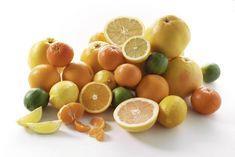
Citrus has found a significant niche in the rapidly expanding foodservice sector, though not to a great extent through products like oranges and grapefruit, which have traditionally been eaten in the UK as whole fruit.
Instead the growth, which has been led largely by the booming bar and restaurant industry, has come via fruits - lemons and limes for instance - that more often than not are supplied either segmented or as part of prepared product ranges.
Arguably the main reason for whole fruit not selling as it might in foodservice is the 17.5 per cent Value Added Tax that has to be levied, at a stroke producing quite a price hike compared to retail outlets.
Matthew Wale, purchasing director of Corby-based Pauleys, says: “If you’re selling product over a counter in say, a canteen, the growth of whole fruit sales is stunted as the restaurateur has to charge VAT.
“If you break down foodservice into its component parts, the schools division of foodservice is a big growth area because the product is focused on healthy eating for children and there’s no VAT applicable to school dinners.
“But when it comes to whole pieces of fruit in the workplace, this sector is not growing at the same rate as foodservice per se. If the cost issue associated with VAT on whole fruit could be addressed we’d see a much bigger growth in the sales of citrus products served as individual pieces of fruit,” says Wale.
“If you look at the route to market, citrus is delivered to a supermarket in bulk and at low cost whereas the route to market for a foodservice product is a little more expensive as you are delivering direct to the doorstep.
“If you then add VAT on top of that, well if you’re a regular purchaser of oranges and you pay 20p for them in your local supermarket you’re not going to pay significantly more than that when you go into your company canteen - so VAT is a bit of an issue in citrus fruit,” he adds.
Wale’s views are borne out by the sales patterns being experienced by suppliers throughout the foodservice market. Arty Welch, operations manager at Reynolds Catering Supplies, based in New Spitalfields wholesale market, confirms: “We don’t sell a lot of whole fruit. We only sell about 12 to 14 pallets of oranges a week - the split for that is about half and half small and medium oranges, then about a pallet of large oranges.
“The small oranges go predominantly to schools as part of the 5 A DAY scheme, medium go to catering kitchens and so on. And we sell about five pallets of limes a week, mainly to the bar industry but also to restaurants.
“We’re seeing fairly steady sales across our citrus business, but the segmented and fresh juice business is where we see growth right across the board.
“We sell 350 to 400 gallons of segmented oranges a week and about 300 gallons of grapefruit, half of that pink grapefruit and half white.
“If you contrast that with the fact that we only sell a pallet of whole grapefruit a week you can see that the segmented industry has become quite big.”
Sodexho UK, one of the largest suppliers to the country’s catering industry, report a similar trend. Peter Joyner, a development executive with the Stevenage based company, says: “As a business we don’t make huge margins on whole fruit so that’s not something we would push.
“From a financial point of view we would push a lemon sponge pudding, for example, because we make a better margin on it. We use citrus mainly as an ingredient in prepared items such as puddings, biscuits, cakes and, to a lesser extent, sauces.
“Also, with the growth in areas such as Thai food, we use limes in our cooking a lot more than we did a few years ago, especially in dressings,” says Joyner.
Limes are one of the big success stories in the growth of the UK’s foodservice industry. Pauleys’ Wale says: “The biggest drivers in citrus are lemons and limes, specifically unwaxed because there are moves to make sure we’re not putting waxes in them which contain anti-mold preparation - you don’t want that in your drink.
“The growth in lemon and lime sales is because they’re being used as ingredients, for example being chopped up to put into a beer or a gin and tonic. This growth is pub and bar-led, but restaurants too - for example if you get crispy aromatic duck in a Chinese restaurant you’ll be brought a finger bowl with lemon in it.
“So the finger-food culture is also driving towards the use of citrus, and the big growth area in the foodservice sector is in fruit being used as ingredients and how they fit into dishes rather than eaten by a piece,” says Wale.
Welch agrees wholeheartedly. “We’re seeing a lot more prepared product being ordered by restaurants,” he says, “especially as they de-skill their operations and reduce labour in their kitchens.
“Prepared product is where we see our biggest growth, although I’d have to say that follows not just in citrus but for most products.”



